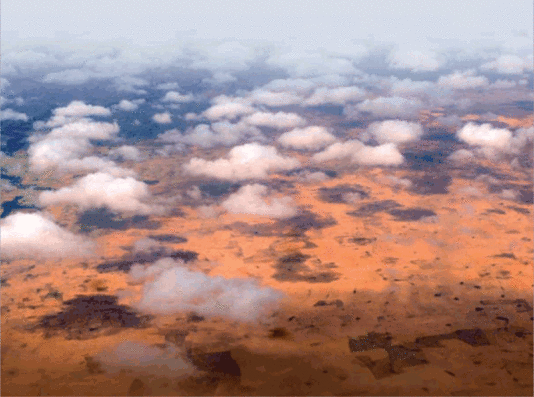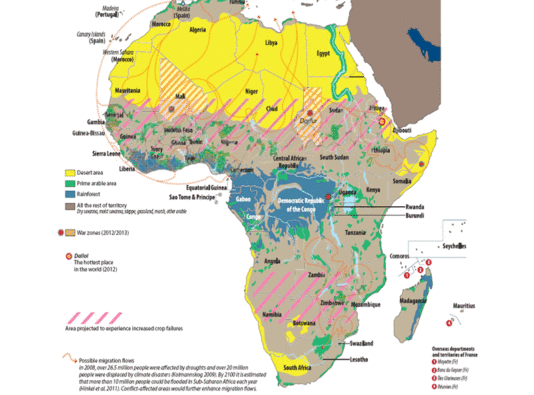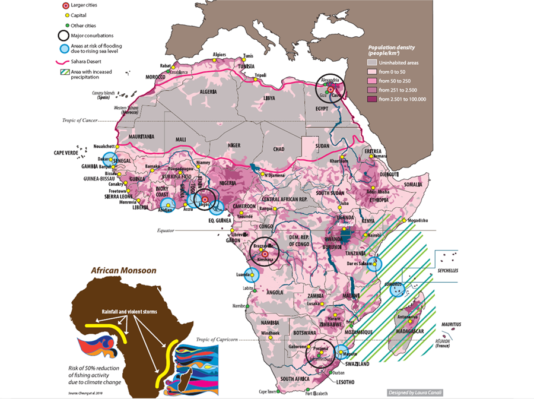- About
- Topics
- Picks
- Audio
- Story
- In-Depth
- Opinion
- News
- Donate
- Signup for our newsletterOur Editors' Best Picks.Send
Read, Debate: Engage.
| September 19, 2014 | |
|---|---|
| tags: | #Cameroon, #Central African Republic, #climate change, #environment, #greenhouse gas, #IPCC, #NGO, #REDD, #UNICEF |
| located: | Cameroon, Central African Republic |
| by: | Israel Bionyi |
The increase in rainfalls in 2012 and 2013 caused heavy floods in the North West, Far North and North Regions of Cameroon, caused a lot of hardships and untold sufferings to the residents. In all the regions, the floods have left many people injured, houses, farms and properties destroyed, leaving about 25,100 people homeless. The 2013 UNICEF reports say most of these people have sought refuge with host families, but 5,000 remain homeless (1,026 families). The World Bank granted a loan of 54 billion francs CFA ($113 million) in 2013 for emergency works against flash floods in the Far North Region and the Cameroon government also created 20 billion francs CFA ($42 million) fund to fight natural disasters, to be managed by the then Interior ministry after the 2012 floods.
Millions on military expenses
Apart from floods, Cameroon spends more than 2355 Billion francs CFA ($471 million) in the military each year since 2011. The amount has increased with the Boko Haram insurgence in 2013. Boko Haram has abducted more than 25 people from Cameroon including the wife of the Vice Prime Minister, Amadou Ali, and about 17 expatriates or foreigners, since 2013. Reports say the government spends massive sums as much as $3 million to release some of the captives. It is not only the money that is invested, time is too. Since the beginning of the crisis, the Minister of Communications, Issa Tchiroma Bakary, has orgarnised about 10 press conferences to inform the public or to bring calmness to the situation. In his latest release on Tuesday September 10, 2014, he said “Cameroon’s military has killed 100 Boko Haram militants…”. The president of the Republic is not left aside; he too is immensely involved in the fight. He has been championing all the negotiations to liberate some foreign expatriates. He lately waged war against Boko Haram, then, assured the population by saying “Boko Haram will not be more than us” in a press interview on the 4th of August 2014 at the Nsimalen airport.
Just like Cameroon spends billions of francs CFA to fight the aforementioned crisis, she spends even more and losses more on corruption. Since 2005, Cameroon has created about 5 gadgets to fight corruption: ANIF, CONAC and The special Criminal court of Justice for Corruption being amongst the most popular. Cameroon invests a considerable amount on all these gadgets to fight corruption. But this has not stopped people from looting huge sums of money or the police man from collecting by force, illegally 500 francs CFA from Taxi drivers on the road every day. The country is still among the most corrupt countries in the world, classified 144, according to the Transparency International’s Corruption Index.
In a bright and sustainable perspective, all these huge sums, time and energy could be invested into a must fight reality that has come to live with us: climate change. Climate change experts believe 20 percent of the world’s emissions of greenhouse gasses (GHGs) come from deforestation. It is the leading source of emissions in the developing world. A recent report by the US non-governmental organization, Forest Trends, says 49 percent of all recent tropical deforestation are the result of illegal clearing for commercial agriculture. According to the FAO the annual average deforestation rate in Cameroon is around 1percent per year equivalent to a loss of around 200,000 ha per year.
The IPCC Report indicates that “Without more mitigation, global mean surface temperaturemight increase by 3.7° to 4.8° C over the 21st century”. For Cameroon, the IPCC 4th Assessment Report had already indicated a possible rise in sea levels with 15 percent increase in rainfall by the year 2100 which would likely decrease the penetration of salt water in the Wouri estuary.
A new World Bank estimate shows that between 2009 and 2013, Cameroon pumped up four percent more carbon dioxide and other greenhouse gases than in previous years. According to the estimates, Cameroon contributed up to 45.4 percent of all emissions in the six-nation CEMAC sub-region that makes up part of the Congo Basin
However, Cameroon has been engaged in international negotiations on REDD since 2005 and is an active member of the Central African Forest Commission (COMIFAC) and the Working Group on Climate Change. Within this context Cameroon has contributed to the preparation and communication of five Congo Basin country submissions to the UNFCCC that helped to highlight the role of forest degradation and sustainable forest management in the REDD discussions. In its proposal Cameroon supports a two phased approach, with funds and markets, a historical reference emission level with development adjustment factors and national and sub-national implementation.
A beginning is done
Cameroon is a member of the Forest Carbon Partnership Facility (FCPF) programme and successfully submitted its R-PIN to the FCPF in July 2008. In November 2010, after a year of discussions with the World Bank, the Ministry of Environment and Nature Protection (MINEP) received a USD 200,000 grant for R-PP elaboration. If the R-PP is submitted and accepted by the FCPF, Cameroon will be eligible to a further USD 3.4 million for its implementation. Cameroon is also engaged with the EU FLEGT process to combat illegal logging. The Voluntary Partnership Agreement (VPA) between the EU and Cameroon was signed in May 2010 and which went into effect two months ago. Because of that, in April, 2014 the implementation of the Law against the production of Non Bio Non degradable plastics debuted effectively.
In 2012, Cameroon cancelled the licenses of 27 forest exploiters because of unsustainable and illegal logging. With the collaboration of WWF, about 19 logging companies in Cameroon are now applying the FSC regulations on their wood.
With 13 percent of the forest gone, Cameroonian officials should start thinking of best means to curb forest degradation and equally putting an eye on development which brings the emission. It is entirely possible to fight climate change, individuals of all classes in all countries be it a Lawyers, Entrepreneurs, politicians, Bankers, Journalist, Farmer… The fight is our fight, it is something that threatens the happiness and existence of everybody and their entire families. It should stop to be the thing of government Ministers, researchers and science journalists. We need a great political will and a collective effort especially Africans who are found in a heavy risk zone. We all need to curb and control consumption of certain products that its fabrication contributes massively to the emission of GHGs.
Links
The 2013 UNICEF report
Transparency International’s Corruption Index
Forest Trends
The IPCC 4th Assessment Report
The Central African Forest Commission (COMIFAC)
The Forest Carbon Partnership Facility (FCPF)
By copying the embed code below, you agree to adhere to our republishing guidelines.



